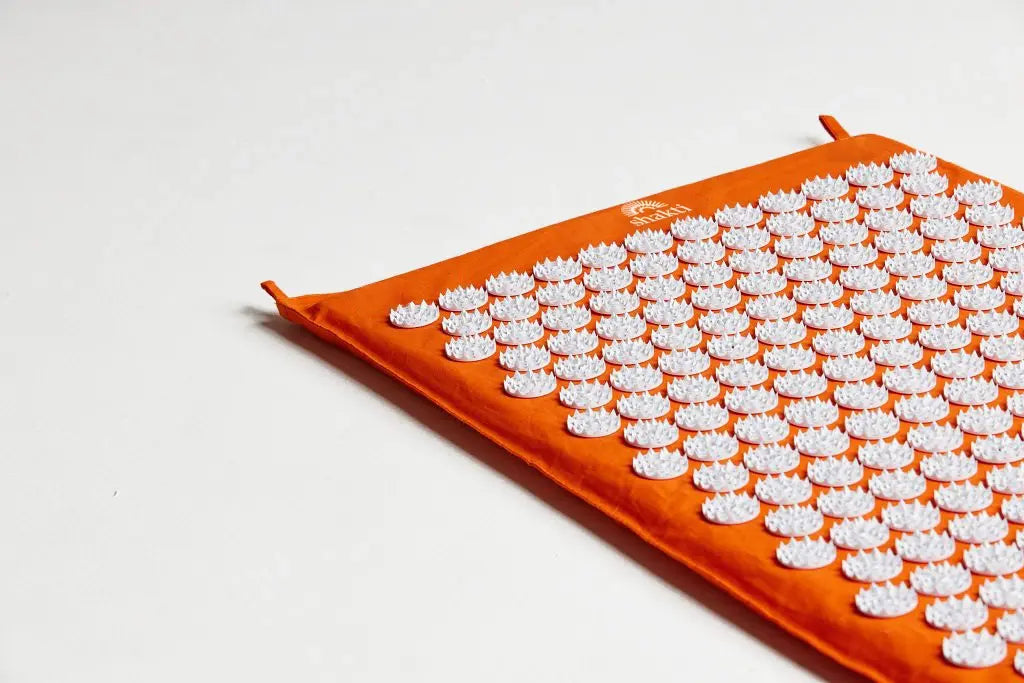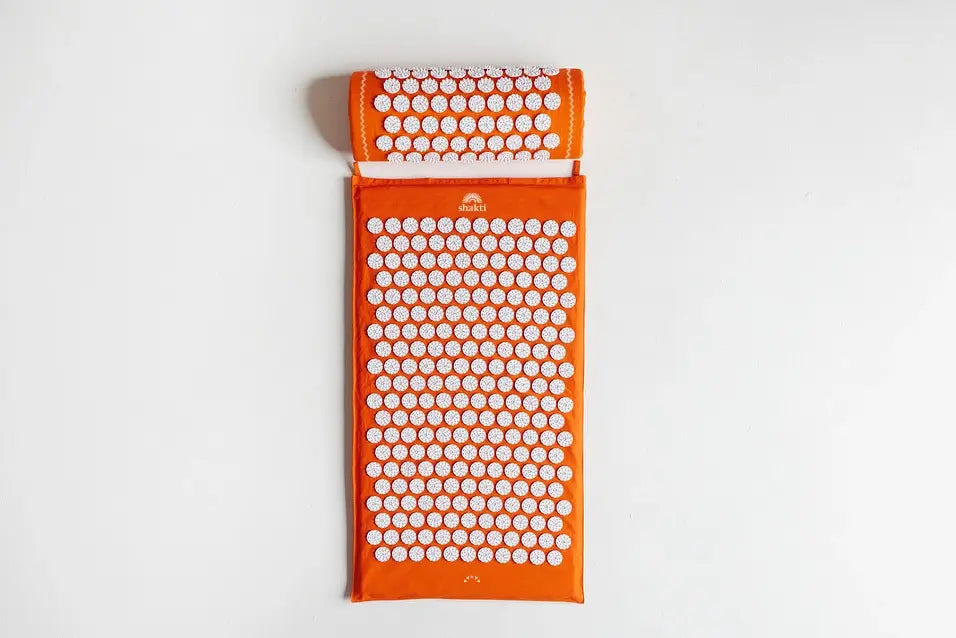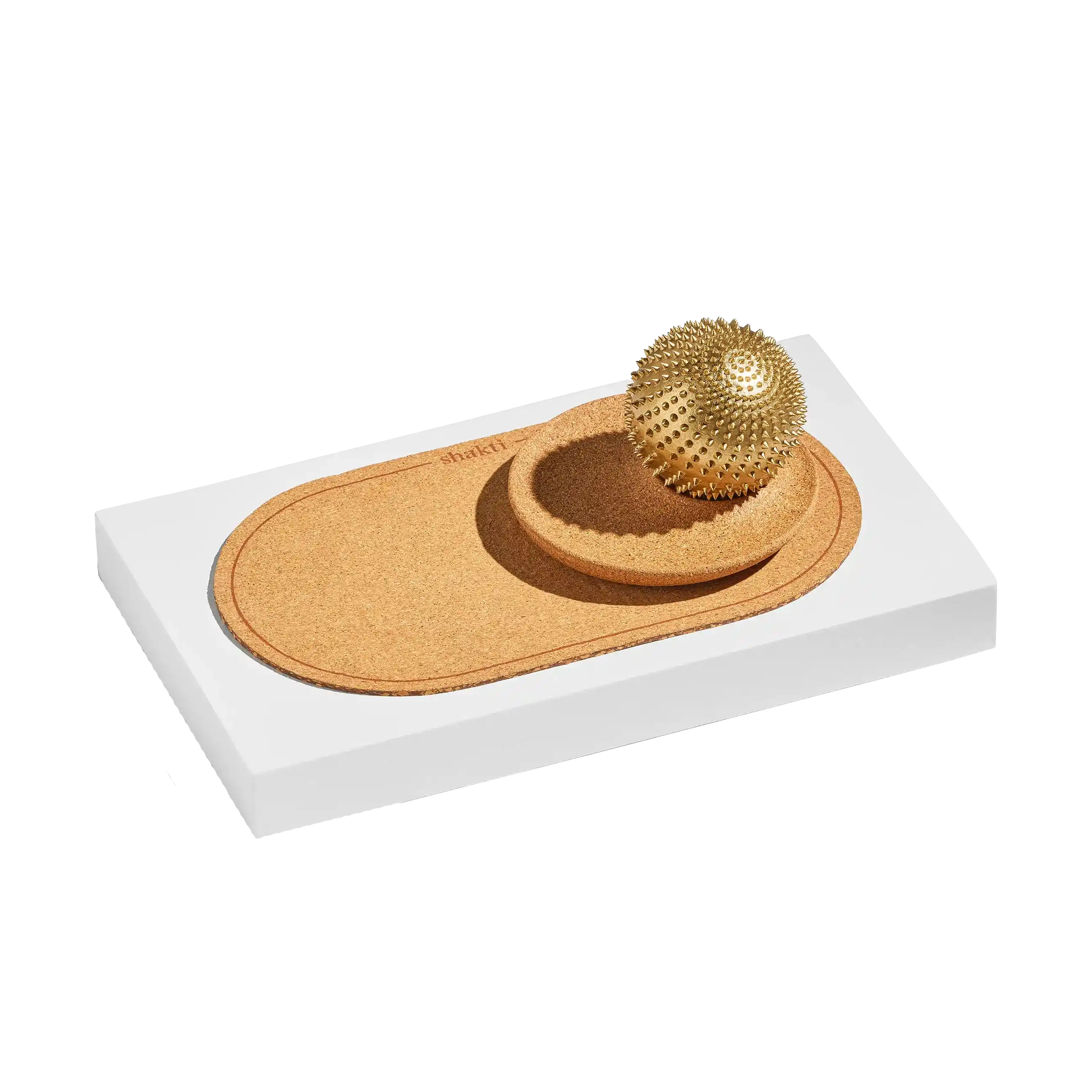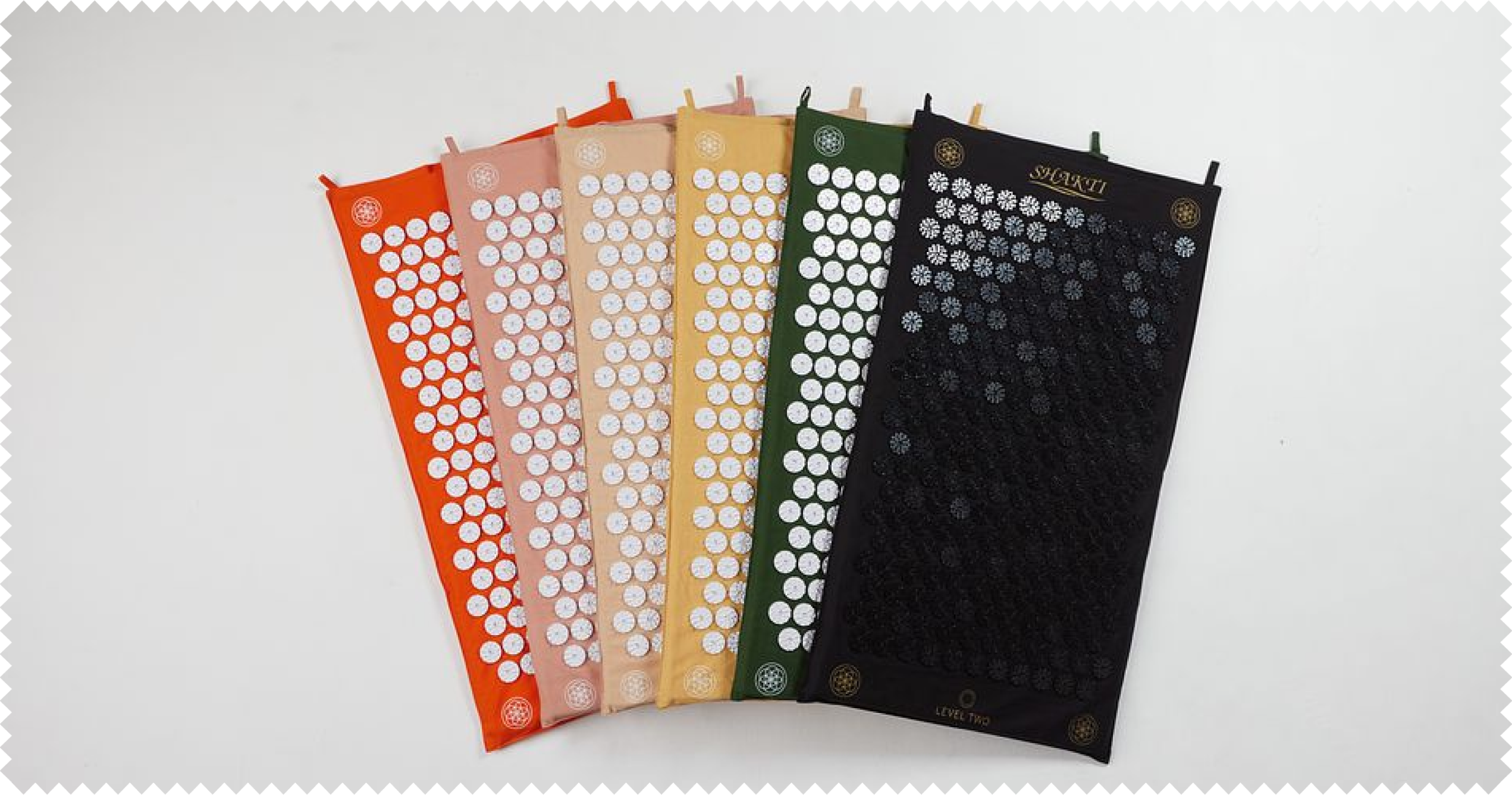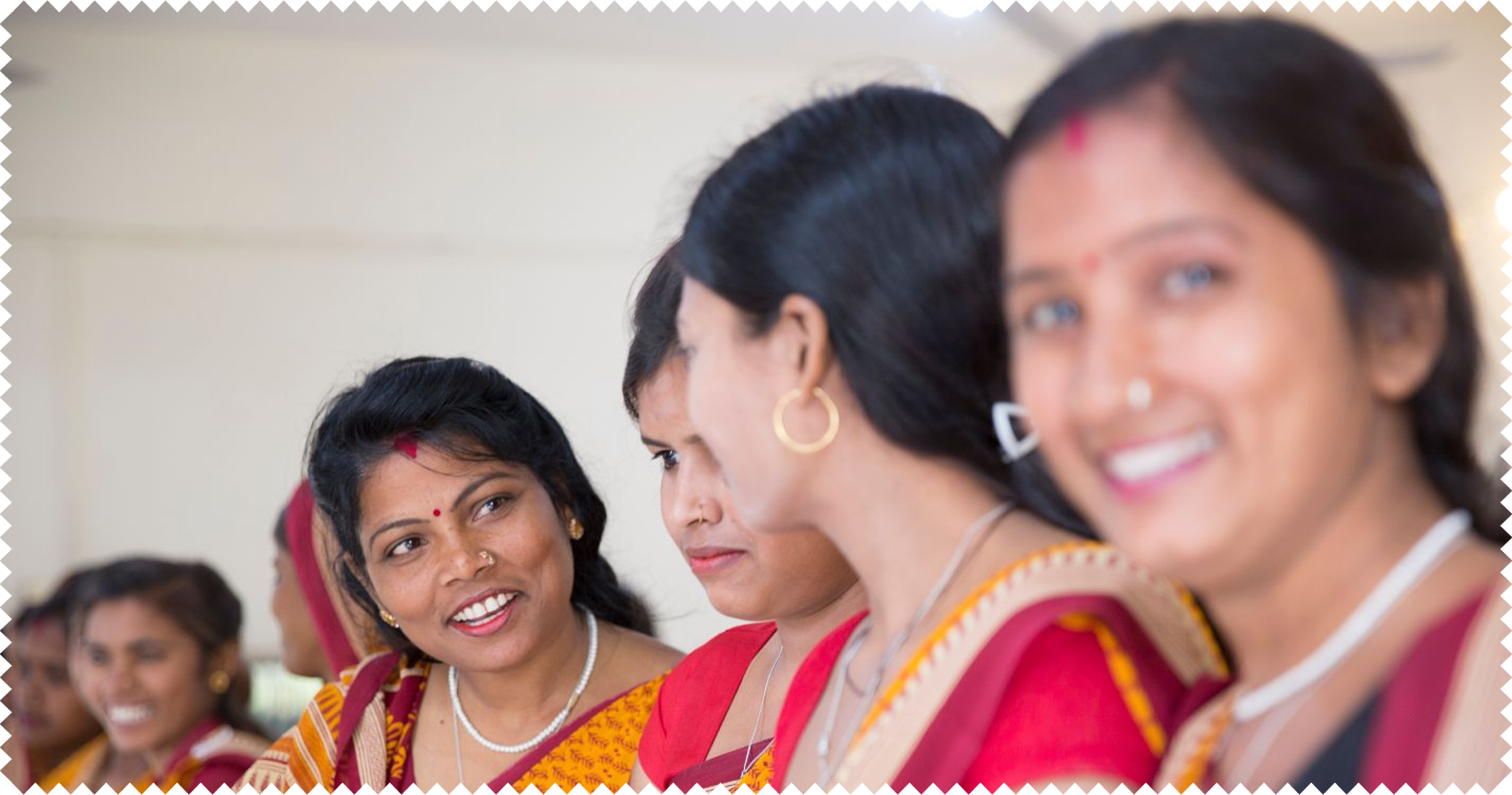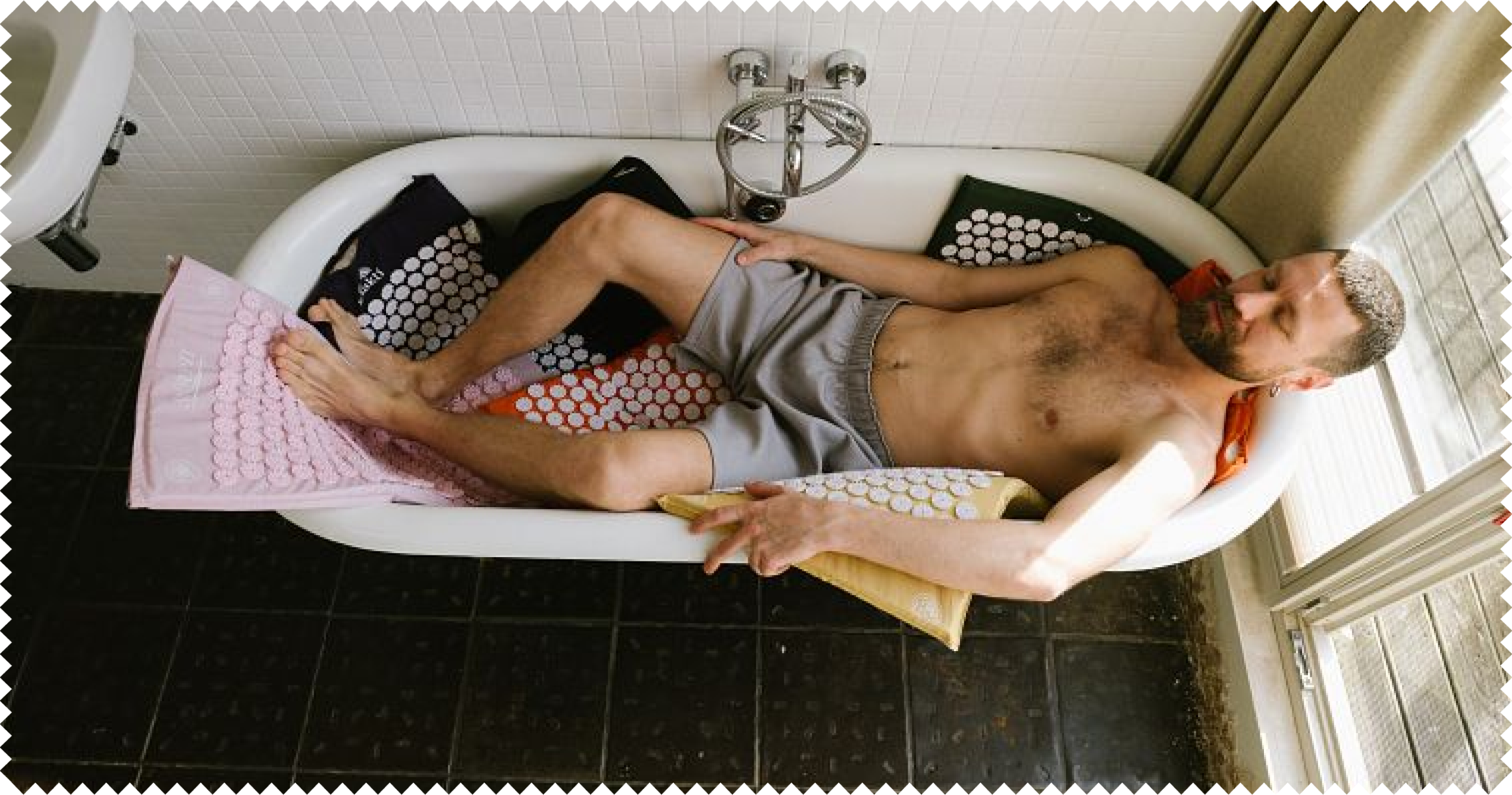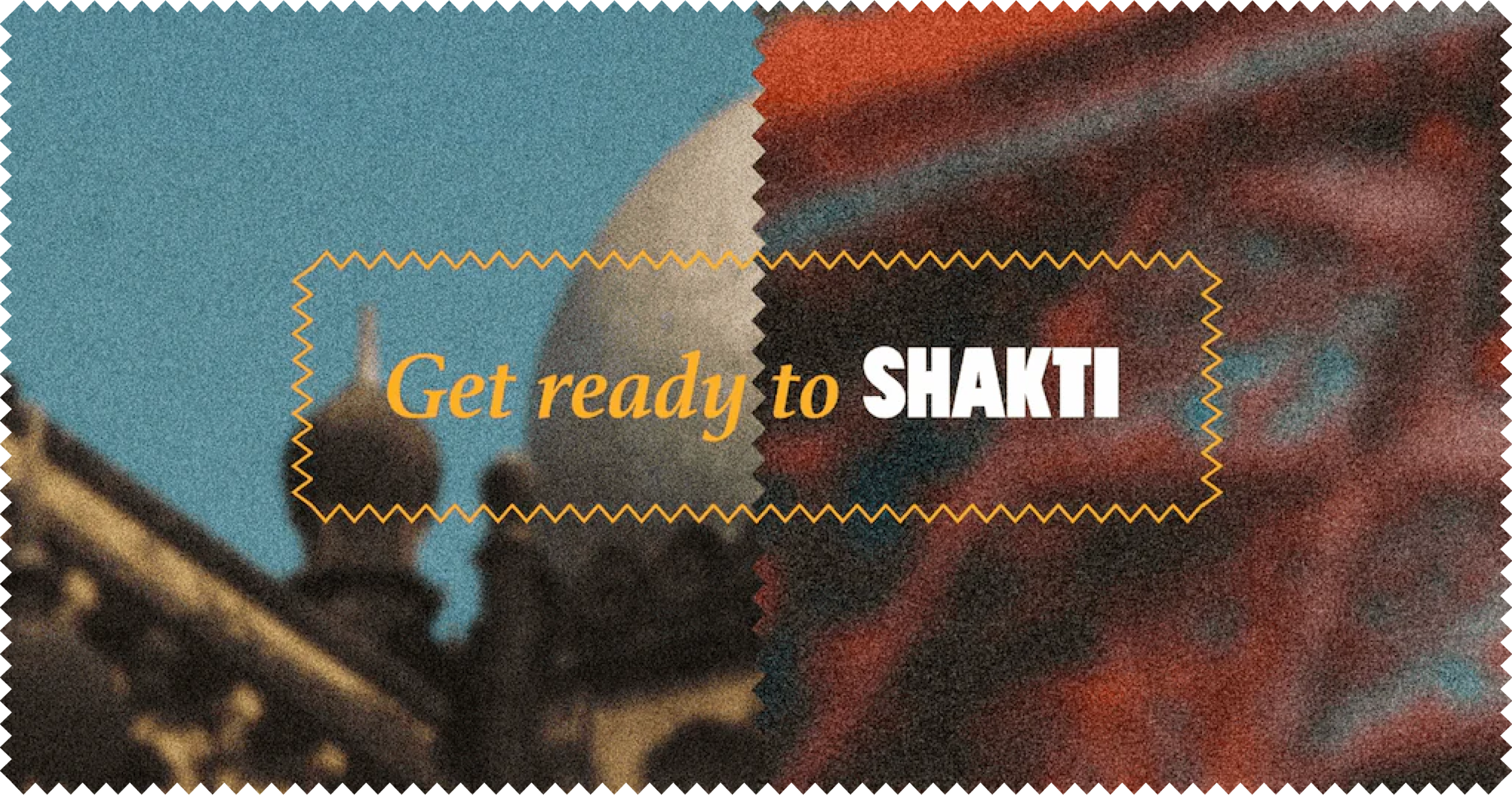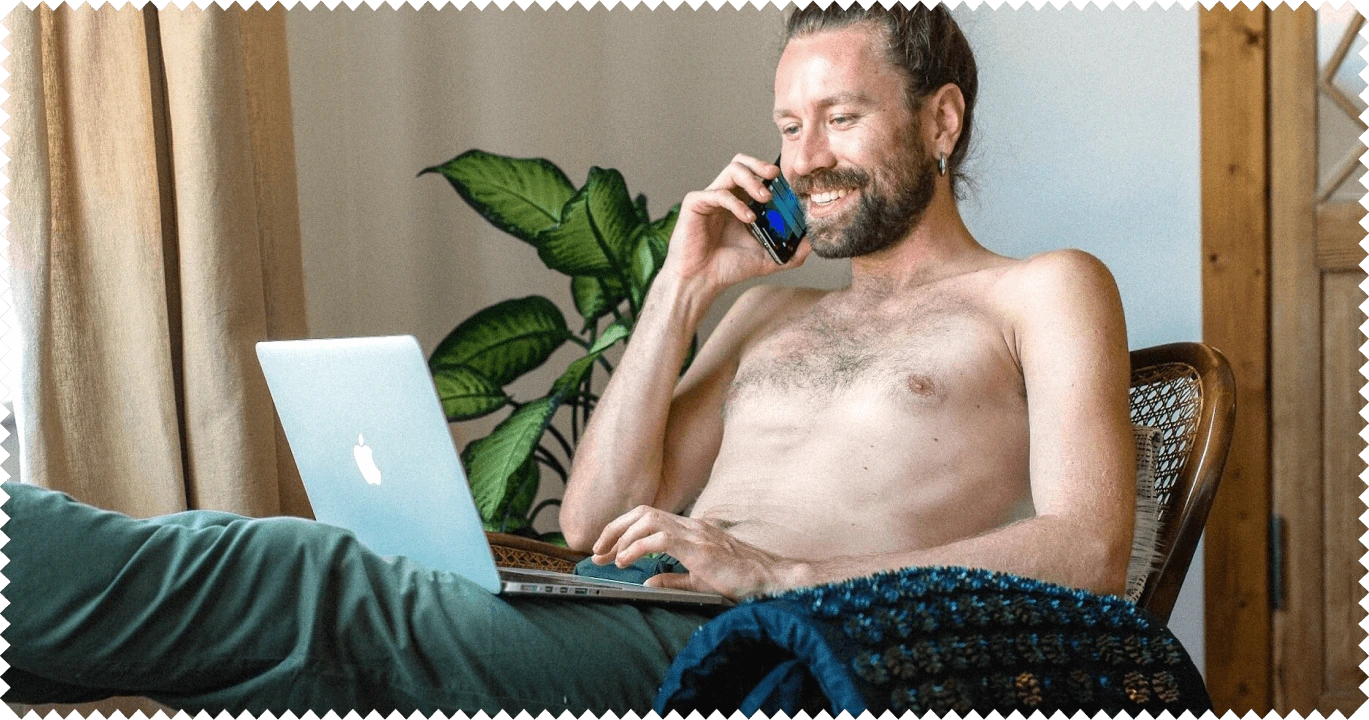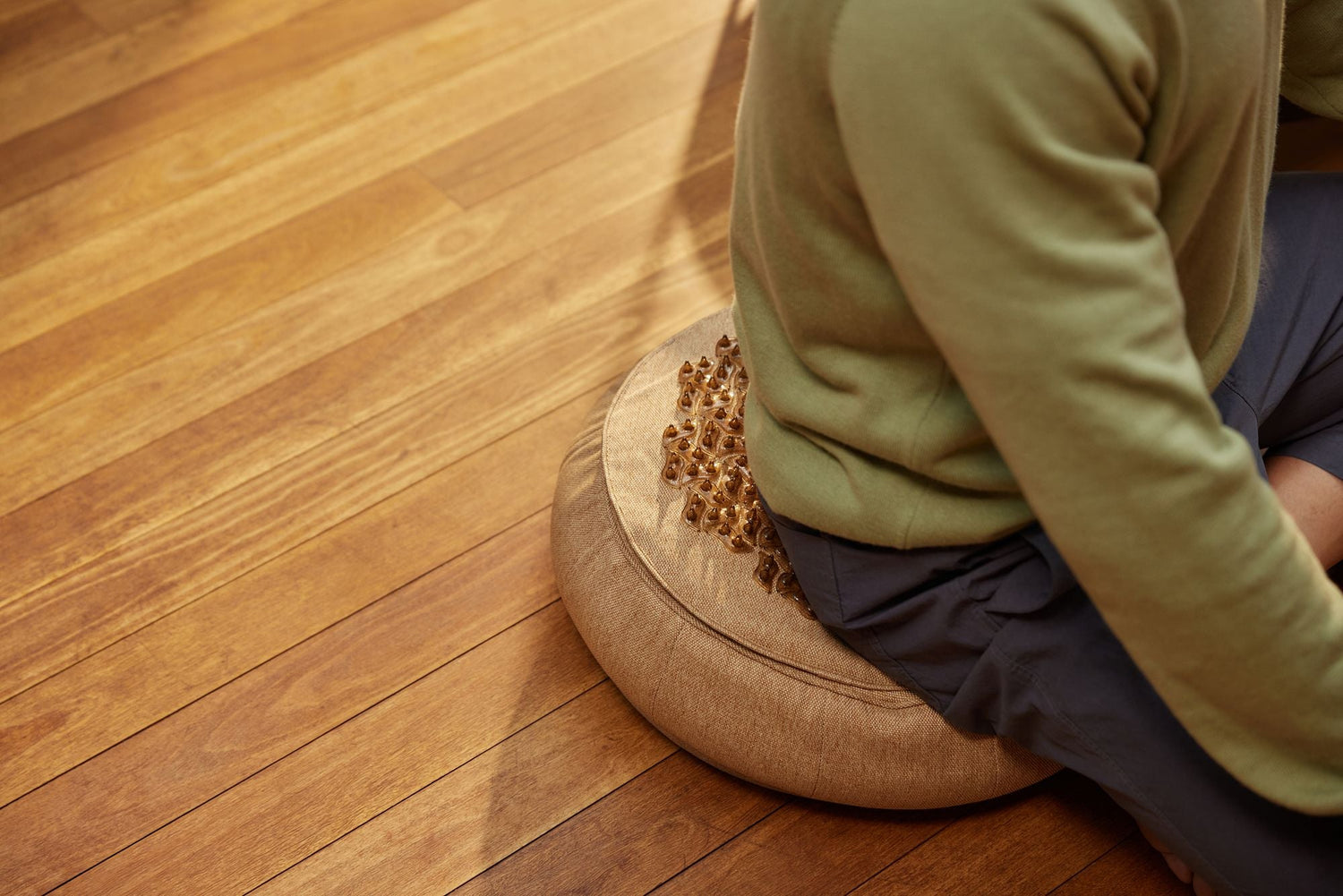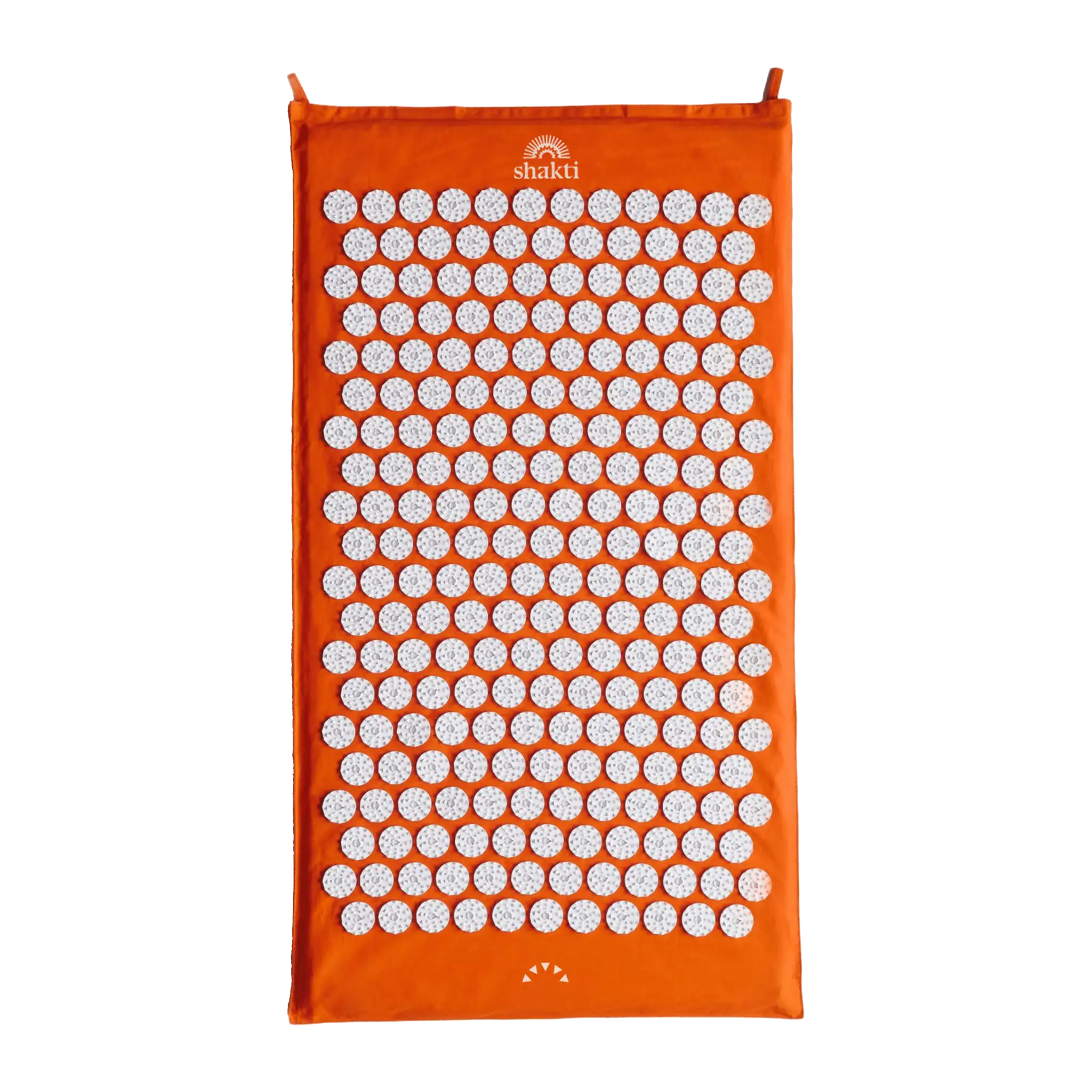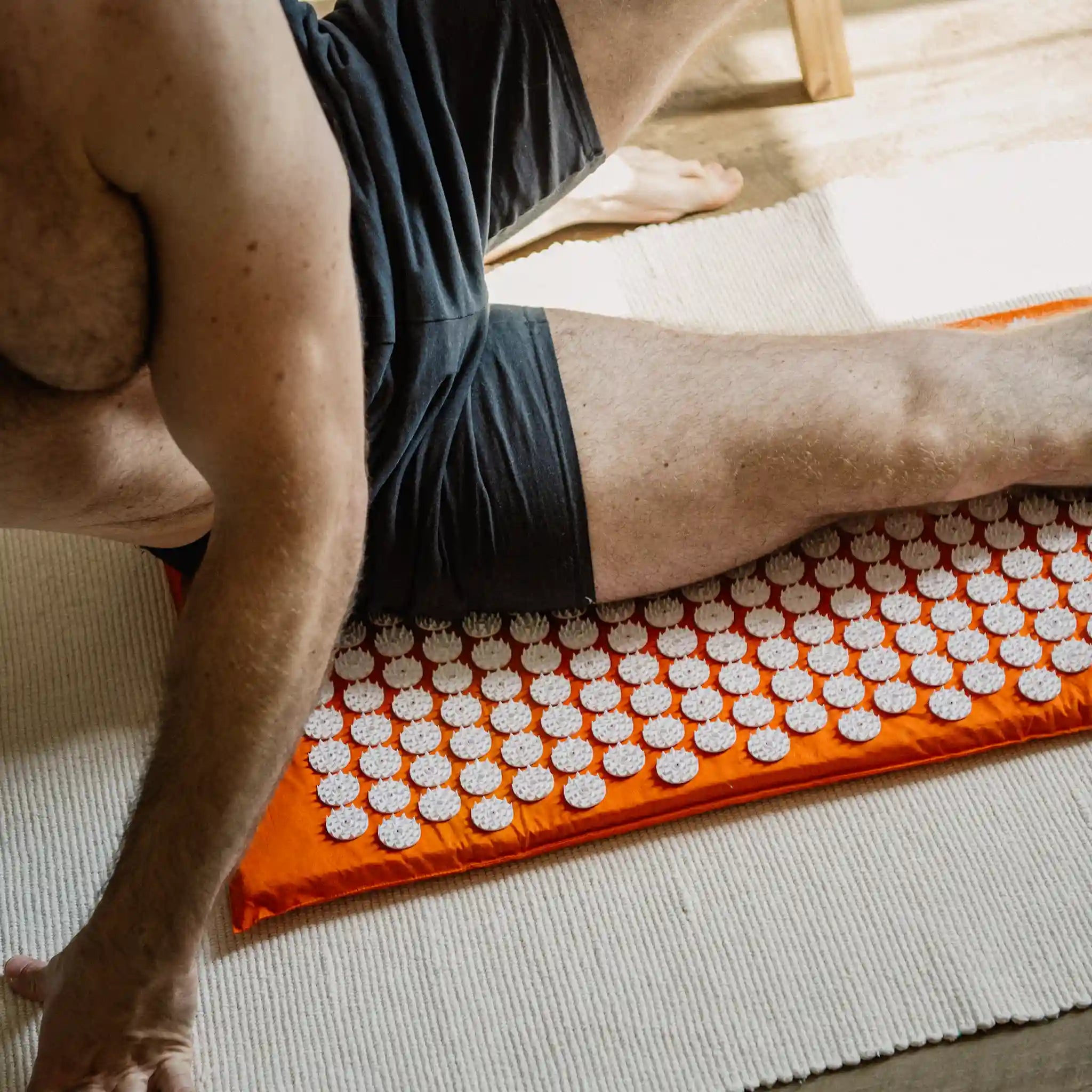Hello, I'm Anette from the Shakti team. Normally I take care of all your concerns in Community Management. Here I'm going to swap the keyboard for the yoga mat and tell you from my experience as a yoga practitioner and teacher how acupressure and meditation can help us to bring a little more calm and serenity into our everyday lives.
You can even start practicing right away! Over the last few months, we've taken the time to record a whole series of wonderful meditations that you can combine perfectly with your time on the ShaktiMat. So double the relaxation awaits you.
A busy schedule, stress, commitments - hardly a quiet minute. Even though many of us have had to take a forced break in recent months, these "I still have to..." thoughts often keep us going even in times of standstill.
Our minds react to stimulation of any kind by producing entire scenarios in our heads, keeping us constantly on our toes. If we lived in complete seclusion in the forest, without smartphones, radio, TV and the like, things might be different, but these are probably exceptions.
Our society today lives in an endless flood of information
As soon as we open our eyes in the morning, we look at our cell phone, turn on the radio in the shower and on the train on the way to work, we read the news or listen to the conversations of our fellow passengers.
All of this and much more needs to be processed every day - the more we feed our brain with information, the more there is to do.
Like most of us, I come from this world and suffered from the consequences of pressure and constant stress for a long time.
I am no stranger to depression, listlessness and anxiety. My immune system was weak, I constantly had a cold and stomach problems were a daily occurrence.
In addition to therapy and medication, I tried many things until I discovered yoga and meditation for myself.
Many years have passed since then. In India, Bali and other parts of Asia, I immersed myself deeply in the world of mindfulness practices. I now share my experiences in Berlin and other parts of the world, wanting to pass on what has helped me achieve more balance, joy and self-love. I am more than happy to do this now with you - our wonderful ShaktiCommunity.
During the last, extraordinary months, our team has also been in a state of emergency. Meditation and the ShaktiMat have been incredibly powerful tools to help us get through the madness and we used the time to record some exercises for you. I have recorded my favorite and most helpful meditations for you.
In turbulent times, moments of restlessness and uncertainty, meditation has become an irreplaceable anchor for me.
It means calming down, taming the little monkeys in your head and turning your attention inwards.
But what makes meditation so special and why is this thousands of years old tradition increasingly coming into focus here in the West when it comes to our mental health? How do you find the right form of meditation and how can you combine the practice with acupressure? I will answer these questions below and provide you with all the information you need to start a regular meditation practice.
Relaxation and rest were initially a long time coming
When I first came into contact with meditation, I was completely overwhelmed. I didn't really know what I was getting myself into. I had signed up for a yoga retreat in Cambodia and I loved the sweaty vinyasa classes. In the evening, there was 60 minutes of silent meditation.
It was extremely challenging for me. My legs ached after what felt like two minutes, the mosquitoes buzzed around me non-stop, not to mention the bites, and my thoughts were louder than ever.
You're supposed to put up with that for an hour! I went through with it, but it was anything but soothing. I indulged myself twice, but I skipped the rest of the evenings.
After a few years of physical yoga practice and less sitting still, I decided to do a yoga teacher training course in India.
The day was packed with everything you needed to know to go deeper into the world of yoga and, of course, meditation was also on the agenda.
It was only then that I began to understand exactly what this meant and that it was not a rigid, dogmatic practice.
Yes, sitting still is one of its many forms, but there is something for everyone. With the method that suits you personally and regular practice, you will soon see the first results.
My daily relaxation
"I immediately felt at ease on the Shaktimat. I do 20 minutes of guided meditation every day and then go straight to bed. I always sleep well afterwards and am totally relaxed, even after such a short time."
- A. Rittmann.
FINALLY CONSCIOUSLY GET OUT OF THE THOUGHT VORTEX
First of all, I would like to dispel a cliché. Meditation is not about sitting cross-legged on the floor for hours on end and then suddenly floating away enlightened.
Without boring you with too much theory, here are two important things to understand:
1. According to yogic teachings, meditation is not something you can practice, but rather a state of consciousness that you can achieve when you are able to understand that we are not made up of thoughts or emotions.
You detach yourself from all physical sensations, familiar patterns and ideas, from yourself and others, and thus approach pure being.
2The process that we go through through regular practice is more relevant than the goal.
Surrendering to the path to enlightenment is certainly quite wonderful, but not so easy to integrate into our everyday lives ;-)
What we can do is to make use of the various practices to reach these higher levels of consciousness in order to get out of stubborn thought vortices and quiet our minds.
ESOTERIC MUMBO JUMBO OR EFFECTIVE METHODS?
Meditation has been practiced for thousands of years. It has its origins in the question of who we actually are.
This article would go beyond the scope if I were to go deeper into the subject at this point, but let me summarize it briefly.
In the West, we try to explain our existence through science. We live in a material world where things have to be explained logically in a solid form and phenomena have to be proven based on facts. Everything we can see and touch exists for us. Everything we can measure, test and prove factually is considered real.
Facts versus feeling
In Eastern teachings, this thousands of years long journey of discovery of our world and the universe went in a different direction. Rishis (sages, seers) detached themselves from everything worldly and turned all their senses inwards to explore what would remain in the end. No measurements, no proof, but direct self-awareness is what the ancient yogic and Buddhist scriptures and teachings are based on.
For us, who are used to facts, it can be difficult to get into these topics. The great thing is: meditation has nothing to do with religion, you don't have to be spiritual or a fan of esotericism. In fact, Western science is now taking the subject seriously and there are numerous studies on how the practice affects the body, brain and mind.
There are numerous forms of meditation and it is advisable to try them out a little and then decide for yourself what suits you best.
MEDITATION IS AS INDIVIDUAL AS WE HUMANS ARE
When I lead meditations or yoga classes today, I always point out that it's not about achieving any goal. I often hear the phrases "I'm not good at yoga", "I can't sit still" or "I can't do yoga because I'm not flexible enough".
It's not about how good you are at all, but how good you feel in the moment of practice.
In our society, we are very focused on having to achieve certain things. Everything we do requires results and can put us under pressure and cause stress. By consciously focusing inwards, we want to achieve the opposite
There is the right meditation practice for everyone
There are endless types of practice: active meditation is often associated with dance, repetitive movements or chanting (mantras).
In principle, the physical practice of yoga (asana) is also a form of meditation. Movement, conscious breathing and the intention to let go - that is the idea of active practice.
We actively let out what has built up due to pressure of expectations, lack of attention to our own needs and the sheer clinging to certain ideas.
Through movement, our Qi, the life energy that flows through us, gets going again. For example, a mindful walk can be a wonderful meditation. Simply leave your cell phone at home, consciously take every step, listen to all the sounds and carefully observe your surroundings. That is mindfulness, that is meditation.
Passive meditation usually takes place while sitting or lying down. Combining them with other practices, such as acupressure, can make it easier to get started, support the effect and bring more variety.
The most important thing is that we enjoy the exercises and that they don't become just another item on our to-do list. We should consciously take this personal time out, without distractions, with the phone in flight mode and a promise to ourselves to take care of ourselves for these few moments of the day.
ACUPRESSURE AND MEDITATION: AN UNBEATABLE TEAM
Acupressure has its origins in Japanese and traditional Chinese medicine (TCM) and is a method of activating our body's self-healing powers.
The technique works on a very subtle level. It is said that energy exchanges can occur along our meridians (energy pathways) which can cause physical or psychological complaints. With the help of acupressure, we support our body in restoring the free flow of Qi.
There are certain points along the meridians that are treated with pressure or needles (acupuncture). The ShaktiMat helps to stimulate many of these points - without much effort.
If we choose the classic version, lying on our back, we stimulate a variety of points in addition to the blood flow, which help us to relieve physical and emotional tension, relieve our organs and create a general balance of our energies. With its thousands of needles, the ShaktiMat obviously works on a physical level, but its fields of action overlap wonderfully with those of meditation.
ARE YOU READY FOR YOUR MEDITATION WITH THE ACUPRESSURE MAT?
Now I would like to introduce you to three of my favorite meditations that I practice regularly on my ShaktiMat. I recommend you give them all a try. You don't need much, just your mat and a quiet place.
If you follow the respective link under the description, you will be taken to an audio that I have lovingly recorded for you as the ShaktiCommunity.
The ShaktiMat Meditation
This is a mindfulness meditation. We focus our attention on a specific point, a classic for this is breathing.
We call this version the ShaktiMeditation, because we concentrate fully on the sensations that our ShaktiMat triggers as soon as we lie down on it.
This can be particularly helpful for first experiences with the mat or to deepen your practice with the acupressure mat even more. You can listen to the meditation here and practice right away.
Listen to and download it on Soundcloud
Roots - The grounding meditation with the ShaktiMat
This meditation is a real anchor for me on stormy days.
When we ask ourselves what connection is really always there, two answers come to mind: the one to myself and the one to the earth.
When I realized this, I began to change my relationship with the earth. When we trust her and literally connect with her, we can feel at home no matter where we are. I have recorded this very personal favorite for you and you can listen to it here.
Listen and download at Soundcloud
Rest in yourself: The I Am Breathing with the ShaktiMat
Deep, even breathing is a crucial part of any meditation.
Breathing deeply in and out signals to our nervous system that everything is okay, calms the voices in our head and allows the body to relax.
Breathing is also important for our practice with the ShaktiMat, as the body can react intensely to the stimuli of the thousands of needles.
In the I Am meditation, we use our breath and the power of our thoughts to consciously reconnect with our body and our self. It can help us to stay calm in moments of nervousness or anxiety and to see clearly again.
Listen to and download on Soundcloud
Acupressure points for a deep, meditative state
To promote the interaction of the ShaktiMat with your meditation even more or if the mat is not to hand, here are two additional points that you can work on before or during your meditation. These points work wonders when it comes to calming us down in stressful situations and finding our center again.
They can help us to find stillness so that we can immerse ourselves more deeply in meditation. Hold the points for a while and breathe in and out deeply in a relaxed manner. Release immediately if it becomes uncomfortable. A sweet pain is welcome :-)
P6 The inner gate
This point is located about 3 fingers width below the wrist bend, between the bones and tendons. As the name suggests, this point helps us turn our attention inward and find balance there.
CV17 The sea of silence
Use your fingers to explore your breastbone. You should be able to feel small elevations there. There are acupressure points in the valleys between them.
If you can draw a line between your larynx and find the exact center, you will reach the Sea of Silence. This point has a calming effect when we are nervous, anxious or emotionally stressed. It can also serve wonderfully as the end point of your practice to create a final centering feeling.
Meditation is an incredibly fulfilling way to have a peaceful and healthy relationship with ourselves and to lovingly accept ourselves with all our shadows.
Just be patient with yourself and don't overwhelm yourself with either your ShaktiMat or your meditation practice. Both require regularity in order to go deeper and feel lasting changes. Try to take at least a few minutes every day, your body and mind will thank you for it.
I hope my personal contribution has helped and inspired you to get into the fascinating topic of mediation or to try something new.
I am sure that you will find your very own practice that you can do wonderfully at home with your ShaktiMat. If you are looking for more meditations, you canfind themhere:
Would you like to find out more about acupressure points on your body? Then we have prepared an article for you at Acupressure from A to Z - Acupressure points on the body for self-treatment .
If you have any questions or would like to chat with other ShaktiMat users, why not take a look at our ShaktiCommunity on Facebook .
Sources
The Yoga Tradition - Its History, Literature, Philosophy, and Practice, Georg Feuerstein, PH.D.
Lundberg, Paul: The book of Shiatsu - Vitality and health through the art of touch. Gaia Books Limited, London 1992, p. 146,
About the author
Anette is a yoga and meditation teacher from Berlin and enjoys being on this planet on her many travels. For her, mindful practices do not only include movement or sitting still on a yoga mat. These are merely her tools for developing an awareness of every moment we are in, learning to move from the head to the heart and living in the same way.



